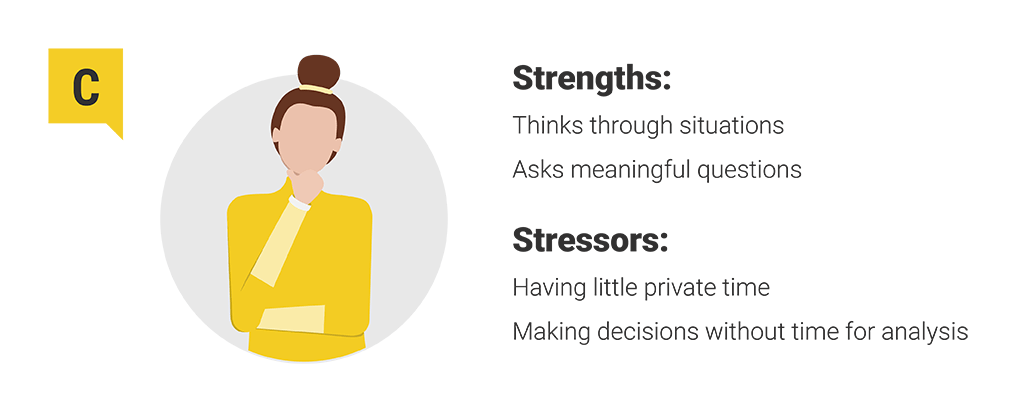How DiSC Can Foster Empathy in the Workplace

As we all look towards settling into a new normal, where some people are returning to the office, permanently working from home, or somewhere in between, team dynamics are undergoing another big shift which can make it even harder to connect. If left unchecked, this disconnection can lead to a lack of workplace empathy as we all try to navigate both our personal and professional lives in an unpredictable time. Empathy is essential for creating healthy and productive work relationships; however, a few common misconceptions often get in the way of expressing empathy at work (see our last article for how we debunked those myths). Research shows that developing an empathetic workforce contributes to increased motivation, productivity, and lower turnover.
So, if empathy is critical to creating a healthy work environment, what’s the best way to embed it in your workplace culture? Empathy is a skill, and just like all skills, each person has a different starting point with different development needs. As such, a one-size-fits-all approach to shaping an empathetic workforce will not work. Instead, it’s imperative to provide people with personalized tools for self-discovery and skill development like DiSC, which provides a simple, yet powerful framework for people to understand, appreciate, and readily adapt to other’s behavioral preferences and tendencies.
With DiSC, coworkers will be able to identify and appreciate each other’s behavioral preferences and tendencies and how those behaviors impact workplace interactions—thus creating a naturally more empathetic workforce. When coworkers can understand where each other are coming from, they’ll start to intuit better responses to their needs and flexibly stretch to achieve more effective interactions. Let’s take a deeper look at each DiSC style:
D-Style
D-Styles tend to be inquisitive, direct, and they are more comfortable pushing back on ideas and initiatives. They prefer to face challenges head-on and are not easily discouraged by common obstacles. While these tendencies help move projects forward, it can sometimes feel like the D-Style is more interested in moving quickly than hearing what everyone has to say.
However, knowing how a D-Style prefers to work can help others stretch to accommodate their priorities and play to their strengths. For example, asking them to support a new project by doing research and presenting it to the group can help them feel engaged, in control, and like they’re getting things moving.

i-Style
i-Styles tend to be outgoing, optimistic, and are often excited to collaborate and connect with a team. They prefer to take quick initiative and are great at making people feel comfortable. While i-Styles are friendly and expressive, they may have a tough time slowing their pace to perform routine or systematic tasks.
However, being aware of the strengths and challenges that are typical for an i-Style can help lay the groundwork for building better working relationships. For example, pull an i-Style in when a project needs exciting and out-of-the-box ideas. In these situations, they will feel connected, creative, and like they are being heard and valued.

S-Style
S-Styles tend to be patient and accommodating and enjoy working with others in a stable, friendly environment. They prefer to have certainty before making big decisions and enjoy doing their part to help the team. However, S-Styles tend to be cautious, so they may prefer to stick to a routine they know rather than trying something new.
However, being aware of what drives the S-Style can help you discover strategies for effectively working together. For example, S-Styles find satisfaction in accommodating others and making personal connections, so specifically calling on them during meetings allows them the space to contribute and lets them ask any questions they need to feel comfortable trying a new approach. In these situations, they will feel supported, appreciated, and like they are working with people who genuinely care about one another.

C-Style
C-Styles tend to be precise, analytical, and reliable, often preferring to work alone rather than in a group. C-Styles are likely to thrive when they have time to think through tasks or when a project needs strong attention to detail. As a result, C-Styles can become stressed when forced to work under pressure or when they must make big decisions without time for analysis.
Demonstrating an awareness of the C-Style’s typical preference for preparation can build better working relationships where coworkers value each other’s strengths. For example, providing C-Styles the meeting agenda or project brief ahead of time allows them an opportunity to analyze the project and develop a list of questions before kickoff so they can feel prepared.

As you can see, everyone has unique preferences and tendencies that shape who they are and how they show up to work. When we understand ourselves and our coworkers better, we can naturally be more empathetic. By using the DiSC model, you will better understand your coworkers’ priorities, capitalize on their strengths, and work better together.
Everything DiSC®, with its award-winning Authorized Partner network, is a global leader in delivering personalized, soft skills learning experiences that have an immediate and lasting impact on the performance of the people and cultures of organizations.
To take a deeper look at the scientific side and data-driven credibility of Everything DiSC, check out our white paper About DiSC: Theory and Research.